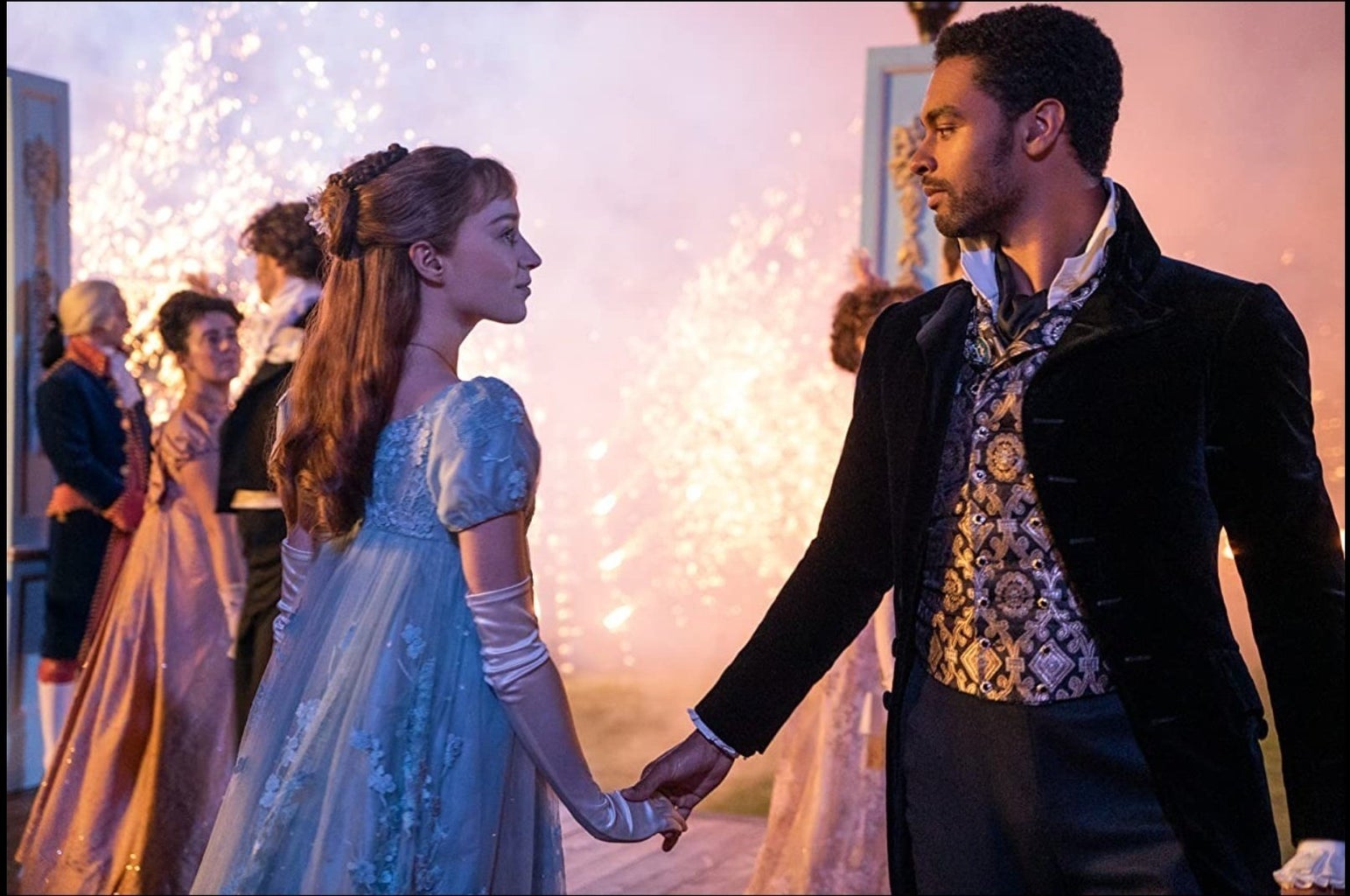When I heard the second season of Bridgerton would be airing on Netflix in just a couple of weeks, I was immediately excited. I hadn’t thought of the series much since its initial debut in December of 2020, but I was eager for more nevertheless.
When it came out, I planned to take my time and maybe only watch two episodes a day, rather than binge all eight episodes (each about an hour long by the way) in two days. I (mostly) kept my promise and had a fabulous time watching it. I screamed, I gasped, I yelled at the screen — it was a whole scene.
I happened to watch a couple of episodes at my boyfriend’s place while he worked, and when he got up from his desk, he would pause and stand there and watch for a couple of minutes.
He too started commenting like, “Oh my god don’t make it so obvious!” when Kate and Antony would be longingly looking at each other in front of literally everyone when they’re meant to be hating each other.
He watched the last three episodes with me and genuinely enjoyed himself. However, he couldn’t help but ask, “Why are girls so obsessed with this stuff? It is really just because he’s hot?”
When he said “really,” I knew that he knew that deep down “hotness” was not the prime motivator.
Johnathan Bailey, who plays Antony, is gorgeous to be sure (though my boyfriend neglects to agree with me), especially now that he’s decided to lose the giant hair and sideburns… But that’s not the main attraction of the show.
Explaining the allure of Bridgerton meant I had to explain some parts of the female psyche, and the human one.
I started off by explaining that the show’s beauty and lack of historical accuracy are visually stimulating and escapist, which can be a good form of baseline entertainment in a show.
This lack of historical accuracy is displayed in the costumes, which many fashion Youtubers have discussed, but more notably, in its inclusion of people of color in a historical drama. Most historical dramas that take place in England or during the regency era erase people of other races altogether.
Even Game of Thrones, which takes place in an entirely fictional place, has a mostly white cast who are all vaguely European with British accents, and the people of color who are present are either tokenized or depicted as savages.
In Bridgerton, however, people of color are centralized, and hold power — Queen Charlotte is a Black woman, and Simon, the Duke of Hastings, one of the protagonists from season 1, is a Black man.
Bridgerton has faced criticisms for its vaguely “color blind” and rose-colored glasses perspectives on race, nearly erasing it from the picture and only commenting on it as a side note. I agree and find value in these criticisms, but I believe there’s also something to be said about allowing characters, and characters of color, to simply just be, and not be limited to stories completely about their race as if it’s the most interesting thing about them.
In the case of Kate Sharma, the main protagonist of this season, her race is mentioned more often than Simon’s (the Duke) is. It was done through positive depictions of Indian traditions and Kate herself musing over how much she loves India and its beauty.
However, Kate’s story is not confined to her race: it’s not erased, but it is simply another facet of her life story. She is also depicted as smart, capable, witty, opinionated, and incredibly loving.
This lovely historical inaccuracy, however, is not the full reason why this show is so popular.
on a woman’s ideal romance
While watching Bridgerton, my boyfriend commented, “It does have a sort of Pride and Prejudice thing going on, don’t you think?”
This “thing” he speaks of I believe to be that magic spice in Bridgerton and Pride and Prejudice that makes people love the romance in it so very much.
What I feel it all boils down to is that people want someone to want them so bad, to love them so much, that they would do anything for them. They’re crazy about them.
“You are the bane of my existence and the object of all my desires.”
I screamed.
Now don’t get it twisted, women do not want creepy stalkers or for men to pursue them so insistently that it’s creepy, predatory and nonconsensual.
What I mean is that everyone desires to be wanted, to be special, and thus the ideal in a romance context is for your partner, or your crush, to want you more than life itself. To be absolutely enamored by you, and only you.
And this desire, in Bridgerton, is shown rather than told, in stolen glances, subtle behavior, an almost touch of the hand.
The editing style of season 2 in particular helps intensify these small moments, using almost disorienting lighting, blurring, and slow motion, the scene’s emotion is felt more clearly- they’re impossible to ignore just as the character’s feelings are impossible to keep at bay.

These intimate, yet seemingly ordinary moments, are hyper-fixated on in Bridgerton. Whereas in traditional 2000s romcoms, where kissing a man didn’t mean your honor would be ruined, these films often feature grand displays of affection, or a makeout scene right out the gate.
It is the anticipation, the ache of “what’s going to happen?” that makes romances like those in Bridgerton so enticing, even if you know in the back of your mind they’ll eventually get together. Somehow that final get-together is still incredibly satisfying.


